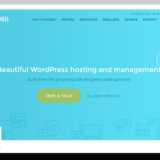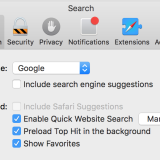How To Speed Up Your WordPress Site: 5 Steps To Building your Ferrari
We wrote earlier (here) about speeding up WordPress, but over time, our own site got really bloated and slow, so I went through and sped it up by several seconds using these tips, plugins, and services, mostly free solutions too. Enjoy.
Here are five concrete steps to do the same.
- Caching: Here’s on KEY tip you won’t find elsewhere. Don’t use W3 Total Cache. It’s a highly recommended app by many, but according to P3, a testing app of mine, and my own research, it adds entire seconds to your load time. It’s just a really bloated. Instead, use an app called WP Supercache, which is also recommended by many. It has a smaller feature-set, but it has the same caching capabilities, and it’s much cleaner. This, paired with the next tip, will shave several seconds from your site.
- Use a CDN (content delivery network): When you buy hosting, your blog/website is being hosted on a single server, somewhere in the world. Mine, for example, is in Dallas Texas. The problems come when visitors farther away try to access your site. Even from my place in New York, my site takes several seconds to load. Content Delivery networks distribute your site to servers around the world, so no matter where somebody is, your site is close by, and it will load quickly. It’s incredibly effective. Sound expensive? It’s actually very affordable. Most CDNs only charge a few cents per gigabyte, which is nothing for small sites, and my CDN charges a flat rate of $40 a year for one terabyte (1000 gigabytes). I use a company called Max CDN (aff. link), and I’m happy so far, but I encourage you to explore all your options before deciding. As for setup, using the built-in CDN area in WP Supercache, setup is really easy, and a good tutorial can be found here.
- P3 (Plugin Performance Profiler). This is the best WordPress analytical plugin I’ve found so far. Have you ever wondered which plugins were hurting your site speed the most? By removing two time-hungry plugins, I shaved three seconds, and sped up my site dramatically.
- Clean Your Damn Databases. Tables filled with old plugin data, spam, and the like can also hold up your site a bit. Clean your databases without any technical knowledge using a plugin called Wp-optimized. You’d be surprised by all the crud mucking up your site.
- Test, test, test. Testing your site from your house is one thing, but it’s not a very detailed sample of your global audience’s experience. I use Google’s free pagespeed tool, and Pingdom’s pagespeed waterfall to test my site around the world. The waterfall (a breakdown of what items take how long to load on your site) is another great place to find items of your site that are slowing it down significantly.
- Bonus- Optimize your images: Most people browse the web at 75 pixels per square inch (PPI) compression, so you don’t need your images to be 300 PPI. Unless you’re a professional photographer, it’s just a waste of money (that bandwidth will be costly) and load time (those larger file sizes will add seconds per photo). Don’t worry if your images so far haven’t been optimized. A WP plugin called
What do you do already to speed up your site?
See our original post here about speeding up your wordpress site.









